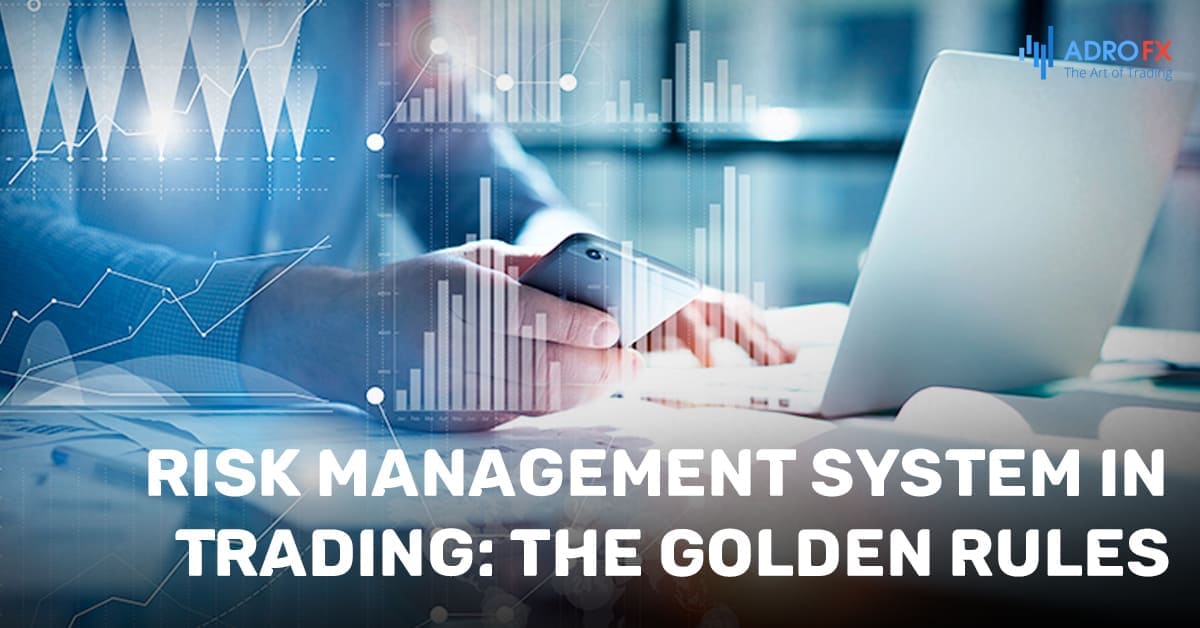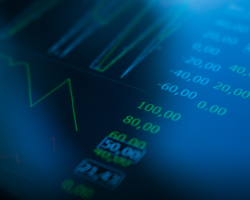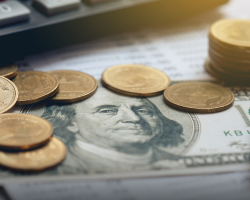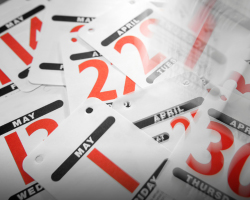Risk Management in Forex Trading: Main Principles

As we know, forex trading is a very risky business. In other words, a trader can lose capital, if the market rate changes to an unfavorable side. However, the threat of financial losses in trading cannot be totally ruled out.
To receive earnings and minimize possible losses the corresponding risks need to be managed properly. Thus, risk management plays a critical role in trading on the currency market. It is necessary to find out what risk management means when it comes to trading on the forex market.
What is Risk Management in Forex Trading?
First of all, it is necessary to specify the concept of risk management regarding speculative trading on the forex market. It should be noted that the interpretation of this term may differ significantly depending on the context. Very often risk management is equated with capital control, trying to avoid losses, assessment of possible losses, reasonable closing of trades, and setting protective orders. However, all of these definitions cannot be considered accurate, because they reflect only some aspects of the risk management concept.
In fact, risk management is an element of the trading system responsible for determining the number of positions held by a forex trader. In other words, risk management comes down to the calculation of the number of lots, constituting a trade. Risk management helps to determine the amount – part of the trading deposit – which can be risked by making the next transaction in Forex.

In addition, risk management corresponds to the management of the size of a trading position, both already open and just planned for opening. A forex trader should clearly understand how the threat of financial losses depends on the number of traded lots (or the volume of a transaction).
In forex trading, risk management provides the following advantages:
Prevents loss of deposit by strictly limiting risks on trades.
Optimizes trading strategy, forming statistics of trades and financial results. Possessing this information, a trader can adjust their methods.
It helps to manage trading capital properly. It allows for the minimization of losses on losing trades and maximizes the income from beneficial positions.
Major Risks in Trading: Classification and Definition
Risk management in financial markets means the management of trading and non-trading risks in trading and investment. Before discussing effective risk management in trading, let us consider the key risks that each participant in financial markets may encounter.
Trading Risks
The risk of "wrong" analysis is, by definition, one of the key aspects of every trader's life. The risk lies in placing trades that eventually turn out to be unsuccessful. The word " wrong" is put in quotes as any forecast is not definite and is only the probability of this or that event to occur. That is why if it does not come true, it is incorrect to talk about "a mistake".
Nevertheless, there are a lot of strategies and approaches aimed at increasing the probability of forecast implementation. For the most part, the trader's job is to minimize the risk of "wrong" analysis.
The risk of increased volatility is the risk of losing the whole or a part of the deposit when the average price movement for a period increases. For example, if the average performance of the currency pair GBP/USD is 1000 pips a day (on a five-digit scale), and on a certain day it is fixed at 1500 - then we usually speak about the growth of volatility.
The chart above shows an example of increased volatility in gold, assessed by the technical indicator Average True Range (ATR, 14). The indicator is shown in the form of a blue curve below the price chart. Traders who do not estimate the volatility may be unprepared for its rapid growth and risk incurring losses. On the other hand, those who trade with it can make higher returns.
The quotes chart shows a significant increase in volatility - to the right of the vertical red line. The orange line on the ATR chart shows the level of maximum for the period to the left of the red line - the value of 12.70. Subsequently, the volatility has almost tripled and reached a value of 33.63.
Evaluation of fundamental factors and advanced methods of technical analysis allow placing successful trades with a high degree of probability even in such conditions.
Before using your strategy on real quotes, practice it on a demo account and optimize it in the Strategy Tester of MT4 trading terminals. Capitalize on your ideas, knowing the strengths of each strategy!
Non-Trading Risks
Currency risk is the risk of depreciation of the currency used in investment. Let us imagine that a trader invested funds in a foreign currency and received a return of 20%. At the same time during the same period, the national currency appreciated against the foreign currency by the same 20%. As a result, when converting funds into the national currency, the trader will receive even less than their initial investment.
Geopolitical risk is the inability to withdraw funds from the accounts of a national or foreign broker and continue trading on familiar terms due to changes in the rules of cooperation at the national and supranational levels.
Prohibitions and restrictions can be imposed against brokers' wishes, but come from the government, the central bank, and other regulatory bodies and are therefore enforceable. The risk of the broker's refusal to fulfill its obligations to the trader. Reasons for refusal can be different: from fraud to geopolitical components, which are discussed above.
Honest brokers earn via commissions and spreads, which is why they are interested in cooperating with each client for as long as possible. Scammers, as a rule, attract clients' funds and stop supporting further communication.
Risk Management System in Trading: The Golden Rules
The system of risk management in trading is a set of actions aimed at minimizing the negative consequences, caused by market uncertainty. Such situations can include economic crises, force majeure, an overreaction of the market to published statistics, and many others.

The organization of risk management activities in financial markets implies adherence to specific rules that imply introducing the principle of diversity (diversification) into every aspect of financial market operations. Let us consider them below:
Diversification of trading instruments. "Don't put all your eggs in one basket" is a well-known saying attributed to various investors and public figures. The wider the range of instruments you actively trade, the greater the chances for success you have.
Are you trading the USD/CAD currency pair, because you analyze macroeconomic statistics from OECD countries? Try studying the S&P 500 stock index. The market will give you much more opportunities to earn!
Diversification of trading signals implies consideration of the reasons for opening or closing positions, which do not depend on each other.
For example, a trader can use (1) trend indicators to determine a medium- and long-term trend, (2) exchange volumes and market profile to estimate support and resistance levels, and (3) market sentiment indicators to estimate the current market positions of participants. The more varied and broader the picture of the market is seen by a trader, the more rational and balanced trade decisions can be made.
Diversification of brokers according to the regional principle. The risks associated with brokers were described above. It's important to note that even if a broker is honest in their commitments, they are always associated with a particular jurisdiction.
Ideally, you should have several trading accounts at brokers in different countries and regions to minimize the risks related to political and economic shocks.
Diversification of trading accounts by account currency. Every trader has heard about cases of rapid devaluation of the currency of any country. If all your savings and investments are quoted in one currency, your portfolio carries currency risk.
In this case, it is wise to allocate capital to accounts in different currencies and even cryptocurrencies, which in today's global economy is gradually starting to play the role of a protective instrument.
How to Create a Trading Strategy Following the Risk Management Rules?
Here is a seven-step plan for creating a trading strategy according to risk management rules:
- Determine earnings goals within realistic limits.
- Determine a list of trading instruments.
- Open real accounts at brokers, which allow trading in the given trading tools, under the condition of considering non-trading risks.
- Form a trading strategy for each instrument.
- Reveal weaknesses of each strategy - these are the key trading risks.
- Adapt capital management and time management system to the strategy to minimize the risks.
How to Calculate the Appropriate Size of a Position?
Risk management in forex trading implies the calculation of the lot size in a trade. The concept of "lot" is commonly used to refer to the size used to measure the volume of a position. For example, one standard lot on the currency market corresponds to a value equal to 100,000 units of the initial monetary unit. For example, for the EUR/USD pair, one trading lot is 100,000 euros.
To calculate the size of a trade, follow a standard procedure:
- Determine the acceptable risk level for each trade
The amount of risk a trader is willing to take by opening a position. This amount shall correspond to the allowable risk calculated as a percentage of the trading deposit. In the practice of forex trading, there are the following approaches to defining the percentage of risk:
Conservative – maximum 2%. If, for example, the deposit size is 1000 USD, then the permissible loss on one position must not exceed 20 USD.
Moderate trader – over 2%, but no more than 5%.
Aggressive trader - more than 5%. With a deposit of 1,000 USD, the allowable loss may exceed 50 USD. It is easy to calculate that a sequence of ten unsuccessful trades will lead to the loss of at least 50% of the trading deposit.
Extremely aggressive trading – over 10%. Such a percentage of risk is considered radically high for forex and, accordingly, is not recommended.
It is important to understand that limitation of risk percentage in forex is predetermined by the psychology of traders, and their emotional stability. Thus, every single speculator can have their allowable risk percentage - individual - which will be the most comfortable.
- Calculate the trading position volume
At this stage, it is necessary to calculate the volume of the position, guided by the allowable percentage of risk. The calculation procedure can be reviewed in the following example:
The allowable level of trade risk is 2% of the deposit size. We place a Buy order in EUR/USD. The trader's deposit size is 2000 USD. Stop Loss level on a trade – 20 points (it is predetermined by the trader's strategy).
The monetary equivalent of the trade risk under the trade is 40 USD (i.e. 2% of 2000).
Then 40 USD should be divided by a Stop Loss value (20 pips). The value of 1 (one) pip will be 2 USD.
Thus, if the capital equivalent of 1 (one) pip on EUR/USD is 10 USD at 1 standard lot, then the trader should open a trade with a volume equal to 0.2 standard lot.
Of particular importance is also the reasonable positioning of protective orders on the placed trades. We are talking about setting Stop Loss and Take Profit. When addressing this issue, traders often focus on the moments of Moving Averages crossover. In addition, it is possible to be guided by support/resistance levels, as well as by a simple mathematical ratio between Take Profit and Stop Loss (for example, 3 to 1).

About AdroFx
Established in 2018, AdroFx is known for its high technology and its ability to deliver high-quality brokerage services in more than 200 countries around the world. AdroFx makes every effort to keep its customers satisfied and to meet all the trading needs of any trader. With the five types of trading accounts, we have all it takes to fit any traders` needs and styles. The company provides access to 115+ trading instruments, including currencies, metals, stocks, and cryptocurrencies, which make it possible to make the most out of trading on the financial markets. Considering all the above, AdroFx is the perfect variant for anyone who doesn't settle for less than the best.









